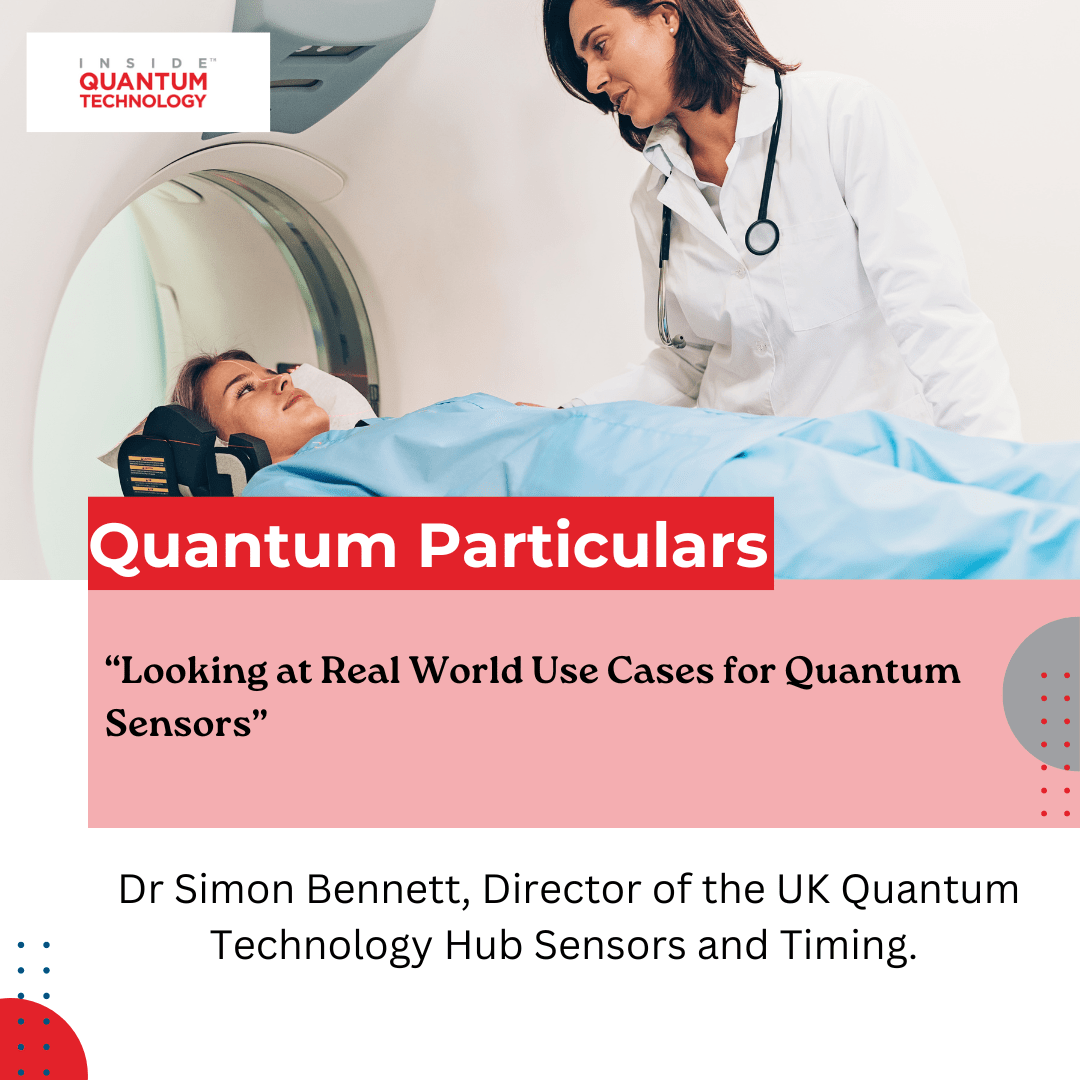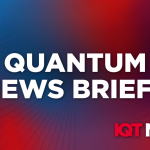Quantum Particulars Guest Column: “Looking at Real World Use Cases for Quantum Sensors”

“Quantum Particulars” is an editorial guest column featuring exclusive insights and interviews with quantum researchers, developers, and experts at key challenges and processes in this field. This article, written by Dr Simon Bennett, the Director of the UK Quantum Technology Hub Sensors and Timing, focuses on the many use cases for quantum sensors.
The progress being made in developing novel quantum sensors means that real-world uses are arriving now. But this is often overlooked.
Good examples of commercial success today include a step-change in brain scanning capability and a way of seeing the world hidden underground. These are practical and commercially viable applications. They also demonstrate how the new era for quantum technologies is moving at different speeds.
So while a full-fledged quantum computer, for all the promise, is still to be developed, novel quantum sensors are being deployed.
Quantum sensors exploit the fundamental physics of atoms to measure real world phenomena; things that we know exist but cannot see – such as gravity, or magnetic fields. The result of this new information is already proving to be of transformative value in healthcare and the wider economy.
Looking at Pediatric Medicine
The Cerca OPM-MEG, for example, is a neuroimaging breakthrough currently unlocking the mysteries of childhood autism and epilepsy with the first wearable functional brain scanner. Imagine a best-in-class scan from a device the size and weight of a bike helmet. The Cerca system is just that, miniaturizing the most advanced scanning technique, magnetoencephalography (MEG), with an array of optically pumped magnetometers (OPMs).
It does this with none of the drawbacks that largely confine conventional MEG to research institutions: High cost, cumbersome equipment and the need for cryogenic conditions. Work being undertaken at the University of Nottingham and the UK Quantum Technology Hub Sensors and Timing, led by the University of Birmingham, is now focussed on scaling up.
The OPM-MEG means that clinicians dealing with challenging patient cohorts have their first real-time image of brain function as the lightweight array of sensors measures magnetic fields. The fields are generated when neurons fire electrical impulses.
The medical leap forward is knowing what neurons are firing where and when during, for instance, seizures or habitual behaviour associated with a particular condition. The information now being gained is expected to help develop and target treatments.
The Cerca OPM-MEG has potential to become the biggest advance in brain imaging since magnetic resonance imaging (MRI), which was invented more than 50 years ago and at the same place: The University of Nottingham.
As a leap in technological capability, the OPM-MEG highlights another: In knowledge.
The new data is giving an unprecedented insight into evolving brains, about which little is known. For example, what are the neural circuits that must click into place to allow us to reach developmental milestones, such as walking or talking? This is barely understood because traditional neuroimaging requires participants to remain still – something that young children cannot manage.
This has made it impossible to scan conscious infants or babies, creating a void in understanding how brains mature in early childhood. By contrast, the Cerca OPM-MEG is unaffected by movement.
Two leading children’s hospitals are using this liberation to research autism and epilepsy: The Hospital for Sick Children, Toronto, and Young Epilepsy a Charity in the South of England working with clinicians from Great Ormond Street Hospital in London. Babies as young as one are being scanned.
In addition to offering improved spatial recognition and opportunities, the OPM-MEG is adaptable and as such offers full lifecycle compliance.
The UK government recently announced funding to develop it for the treatment of dementia, the first of a suite of challenging neurological disorders that the OPM-MEG could help to unlock. The new system may also help to identify biomarkers for the likelihood of long-term problems after mild traumatic brain injury or concussion.
This has implications not only for contact sports such as boxing, American football and rugby, but also for the military. Concussion affects 23% of US combat forces, according to Defence Department estimates.
A significant proportion of people who suffer such brain injury develop further health issues, including psychological problems and extreme headaches, even after apparent early recovery. In addition to brain scanning, there is also promising research taking place to use quantum sensing technology on babies in the womb and for heart observations.
Quantum Sensors See Everything Underground
Quantum sensors, which work by detecting changes in motion, electric, gravitational and magnetic fields, are also allowing a first Google maps-style view of what lies hidden underground.
A gravity gradient sensor, which harnesses gravity to see the unseen, is able to chart the world beneath our feet, theoretically to any depth. It works by measuring variations in gravitational pull arising from localized masses.
The gravity gradiometry developed at Birmingham found a tunnel buried outdoors in real-world conditions one meter below the ground surface. It won an international race to take the technology outside.
The implications are considerable. It should mean, for example, being able to reduce unnecessary roadworks, identify unforeseen subsurface hazards such as pipes ahead of construction projects, and even discover buried artifacts.
Currently, delays and costs associated with unforeseen hazards add significantly to construction and infrastructure costs.
The gradiometer is also expected to help monitor carbon sequestration schemes that will mitigate climate change.
Gravity gradiometry developments made at Birmingham have led to a spin-out company, Delta g, which is now developing commercial prototypes, including for the UK Department for Transport.
In addition to clearly valuable use cases, the early success of novel quantum sensors is building up a flourishing supply chain, which is of benefit to all quantum technologies.
Magnetic Shields Limited (MSL), an established UK company with clients that include the US space agency, NASA, is now a world-leading provider of shields for many different quantum systems.
Theirs is not a passive role in the new era quantum story. MSL designs as well as builds, collaborating closely on the product development journey.
Companies such as MSL are ensuring not just the reach to quantum capability, but that crucial transition from bespoke to scalable commercial value.
Quantum sensors are already delivering the new era for quantum technologies by reshaping our understanding of the brain and unveiling the hidden layers of our planet. Novel quantum sensors are happening, not hoping to happen.
Dr Simon Bennett is Director of the UK Quantum Technology Hub Sensors and Timing, led by the University of Birmingham, where he helps to drives the translation of gravity sensors and ultra-precise clocks into technology and applications across a diverse number of sectors, including climate, communications, energy, transport and urban development. He has been active in shaping the Hub’s strategic plan and has played a leading role in developing a technology road map for sensors based on quantum technology.





















